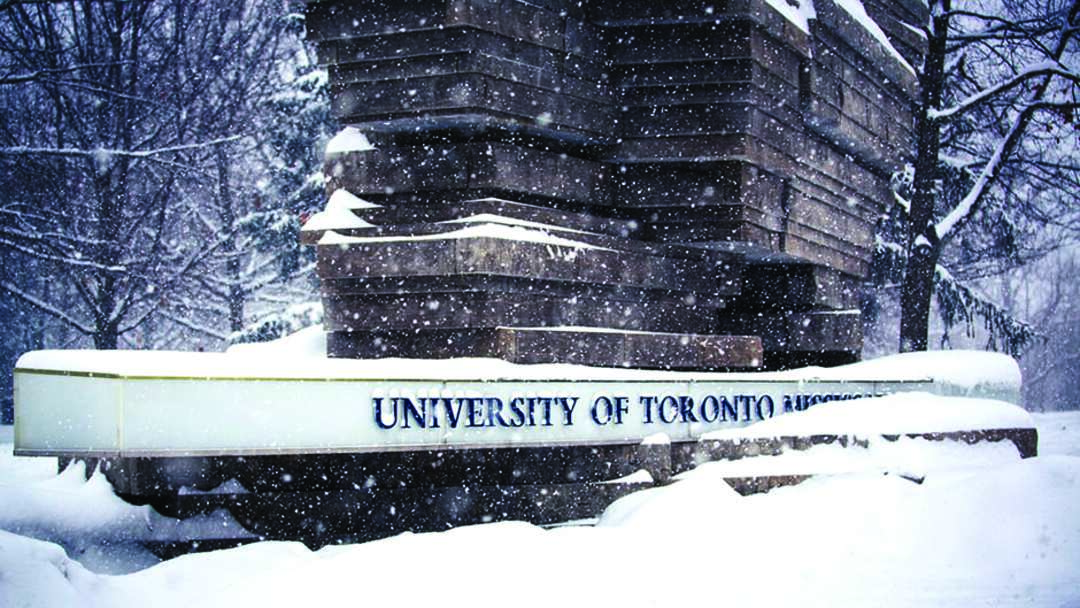According to UTM’s Annual Enrolment Summary — presented by Registrar and Director of Enrolment Management Lorretta Neebar to the campus’ Academic Affairs Committee on January 13 — UTM’s intake of new students was much higher this year as compared to previous years.
Announcement of return to in-person learning expected soon
Rhonda McEwen, UTM’s vice-principal, academic and dean gave the Presidential Assessors report, in which she explained that some exceptions were made to achieve an earlier return to in-person learning for certain programs. She confirmed that 21 courses have begun in-person learning, including labs, and certain drama courses in the Department of English & Drama.
“We are happy to say that the decisions we made, and the exceptions that we did entertain, did actually hold through with the delay to the start of this term due to the rise of the Omicron [variant],” she said.
McEwen explained that UTM’s assumed return-to-campus dates — created based on the modelling data from the Ontario Science Table and from Ministers of Health across both the Peel and Toronto regions — seem to have been modelled accurately. “We are starting to get notification that we are hitting that peak [of COVID-19 cases], and that we should start to see [case numbers] drop off,” she said.
She explained that, for now, many departments are running courses online until January 31, and that further announcements from the university will be forthcoming. “I don’t want to preempt them too much. But those announcements should come early next week.”
Registration data
According to Neebar’s examination of the new and returning student populations, the number of new intake students has risen by 26.4 per cent — from 3,539 enrolments in fall 2020 to 4,473 in fall 2021. However, the number of returning students dropped by 7.5 per cent from 11,763 in 2020 to 11,675 in 2021.
Neebar explained that the drop in returning students was “almost exactly the [number] of students we were short last year on our intake,” and while this correction wasn’t intentional, Neebar said it symbolised good student retention.
Neebar said that their data is all “headcount” and that it doesn’t differentiate between enrolment statuses, such as part-time or full-time enrolment. “I’m really just looking at how many individuals are enrolled at UTM,” they said.
“We have about as many students registered as an upper-year student as we did in the past, which is great news because our incoming class was a little bit smaller last year,” Neebar added.
Increased international enrolment
While the proportion of international students in the general student population remained roughly the same as in past years — with international students making up 27 per cent of the total student population — international enrolment increased to 37 per cent of all new students. “The first thing I’d like to say [regarding why this happened] is that it’s incredibly difficult to predict yield and do yield modelling in a pandemic,” said Neebar. Neebar attributed the increase in total intake to the increase in international students.
Enrolment figures are less and less consistent each year, and so UTM has a higher number of students than expected. Neebar said that the registrar had “more offers this year, in anticipation that we would struggle with our international numbers, but… we had many more students accept than we expected.”
The UTM acceptance statistics were 61.8 per cent from Ontario secondary schools; 20.9 per cent from foreign secondary schools; 9.8 per cent from other Canadian secondary schools; and 5.5 per cent were from university or college transfers from Canada. A final 2 per cent came from foreign universities and “Other.”
Neebar also presented the intake figures when divided by citizenship as well as students’ domestic and international status. “For example… with India, we have 170 students with citizenship in India. However, 133 of them are considered international, and 37 of them have some sort of domestic status in Canada,” they said.
Other enrolment information
Computer science, mathematics, and statistics were the most popular programs among new intake students, representing 17.6 per cent of the total. Social sciences came in a very close second at 17.3 per cent, and commerce in third with 13.53 per cent.
UTM saw a drop in graduations in June, which the registrar’s office believes was due to the fact “that some students were hoping that we would be back to having an in-person ceremony and so they pushed off their June 2020 graduation in hopes that they would be in a November convocation in person.”


